Primanex Participated in the 9th China Optical Fiber Sensing Conference
April 18, 2016, Qingdao
From April 17th to 19th, 2016, the 9th China Optical Fiber Sensing Conference and Industrialization Forum were held in Shenzhen, Guangdong Province. The meeting was sponsored by the Optical Fiber Sensing Technology Application Expert Committee of China Optical Engineering Society and China Optical Fiber Sensing Technology and Industrial Innovation Alliance, undertaken by Shenzhen University. Representatives from Primanex participated in this conference. This is the first time that Primanex returned to the fiber-optic sensing family after many years absence as former name Zhaojin Optoelectronics’s.
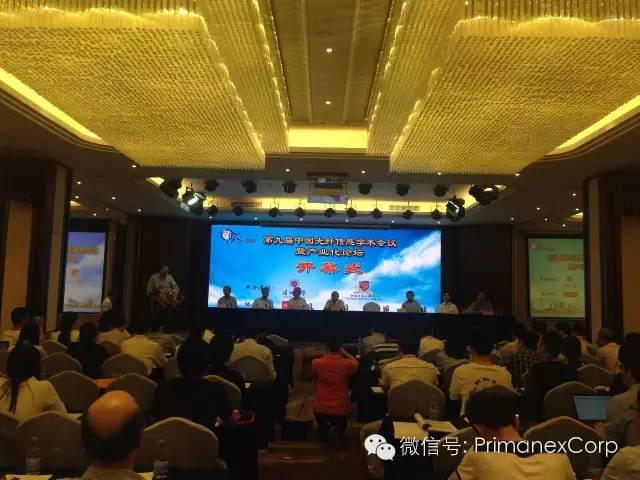
At 8:30 am on the 17th, the meeting started. This conference brought together representative research groups, experts and scholars, industrialization teams and business representatives in the field of optical fiber sensing at home and abroad. The organizing committee invited a number of academic experts, enterprise elites and outstanding young people to do special academic reports. The report includes the latest research results in the field of fiber optic sensing. During the reporting process, the participants actively exchanged ideas and asked questions to discuss the future development direction and planning of optical fiber sensors in China.
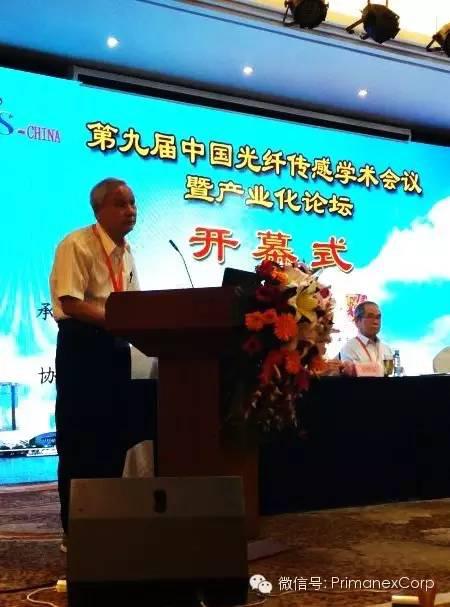
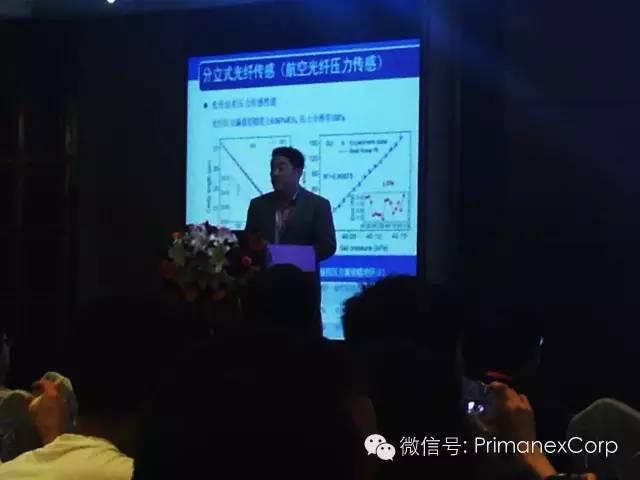
In the gap between the reports, I paid tribute to Professor Liu Yiyuan, a veteranacademician of the Shanghai Institute of Optics and Mechanics of the Chinese Academy of Sciences, and Professor Liu Tiegen of the Precision Instrument College of Tianjin University. I also specially greeted Professor Liao Yanbiao of Tsinghua University. As early as the author returned to China from JDSU and founded Qingdao Zhaojin Optoelectronics 12 years ago, I discussed with Liao about the Faraday optical mirror used in fiber-optic hydrophones. Twelve years have gone so fast, my teachers are still hale and hearty, and I have already had grey hair. Although fiber-optic sensing industry has made great progress, it is still a "sunrise" industry, and there is much to be done. Also, the former JDSU colleague Dr. Yang Yatao humorously tweeted on WeChat that fiber-optic sensing industry is already the "sunrise" industry in the 1980s.
Professor Wu Chongqing from Beijing Jiaotong University discussed with me, taking the fiber-optic sensing application in coal mine as an example. Professor Wu believes that fiber-optic sensing is too expensive compared to traditional power-receiving methods, while at the same time it cannot bring revolutionary performance improvements. Moreover, traditional methods have been deployed in underground coal mines, and fiber optic sensing requires to completely rebuilding the network, and the existing network is not compatible, which will undoubtedly make the coal mine owners hesitate. The use of fiber optic sensing systems in some coal mines is merely a "show". I agree with Professor Wu that coal mine applications typically represent the plight of the fiber optic sensing industry. Combined with my experience in the fiber-optic communications industry, the lack of Killer Products or Killer Application in the fiber-optic sensing industry is also an important reason. Electro-optical effects, Faraday effects, Rayleigh scattering, Brillouin scattering, Raman scattering, Fabry-Perot cavity, Sagnac ring, Fizeau interference, Michelson interference, etc. in traditional optics have almost been used and is all-encompassing,; but it is difficult to have one product can ravel others. The actual situation is that they distribute on the standards, and every specific application is customized, resulted in the high cost. In contrast, fiber-optic communication has entered everyone’s home from the so-called highbrow in the past. The standardization has been highly successful, and the initial high cost proved to be solvable. For example, the simplest optical isolator in the fiber-optic communication system in the late 1990s could be sold for $2,000, while the current price was less than 100 yuan. I believe that people who working in this field are all thinking about this issue.
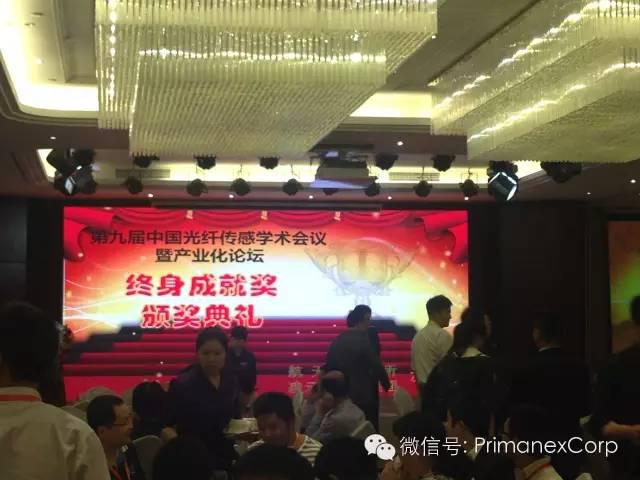
The grand welcome dinner was opening at 6:30 pm.
This year is the fortieth anniversary of the invention of the fiber optic gyroscope. The United States on the other side of the ocean holds a commemorative event at the same time. The organizing committee of the conference specially arranged the "Lifetime Achievement Award" ceremony, and the honor was awarded to Zhang Weixu, an 86-year-old professor of Beihang University, the father of Chinas fiber optic gyroscope. The academician Wang Wei, one of the disciples of rofesser Zhang, the Director of China Aviation 9th Academy, gave a heartfelt reading speech. Professor Liao Yanbiao from Tsinghua University and Dr. Jiang Desheng from Wuhan University of Technology presented the award. All the fiber-optic sensor people were on their feet and clapped for Mr. Zhang. The ovation lasted for a long time.
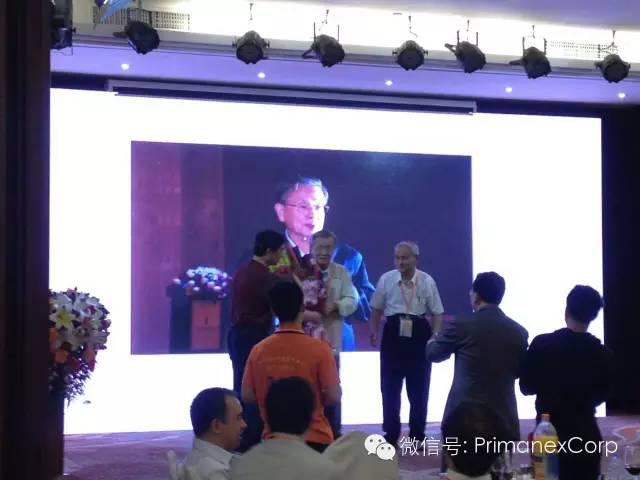
Mr. Zhang quietly reviewed his own experience in developing fiber optic gyroscopes. He talked about that he started research on fiber optic gyroscopes when he was 50 years old. At that time, he didn’t understand anything about it; then he endeavored and persisted in it for 35 years. The leader of missile equipment research said, "At the beginning of the prototype test, I didn know what to do. I prepared four fire engines... Now the missiles are based on our own fiber optic gyroscopes, and finally can reach the target within 100 meters! ..... We are all looking forward to you be awarded!"
Mr. Zhang "dare to be the first in the world, and opened the first development of Chinas fiber optic gyroscope; for decades, he continued to overcome difficulties and achieved brilliant results; with the gyro dream, he is still on the road". When Mr. Zhang talked about that he plans to continue relevant researches in the 13th Five-Year Plan, the audience seems to have forgotten that he is an 86-year-old man!
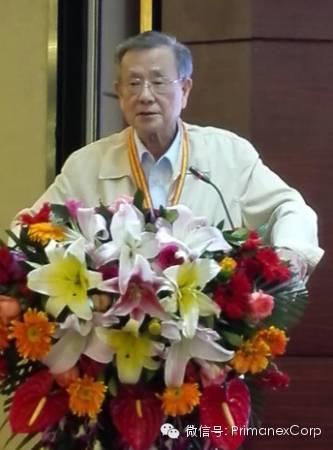
We acknowledge that Chinas fiber optic sensing industry has so many problems, but if we have Mr. Zhangs persistence and tenacity, what else can’t we do?
Pay tribute to all colleagues working in Chinas fiber optic sensing industry!